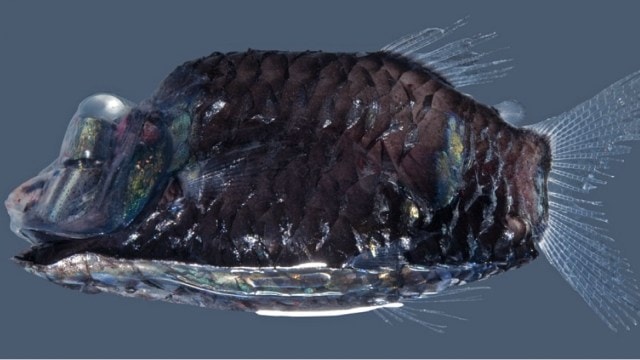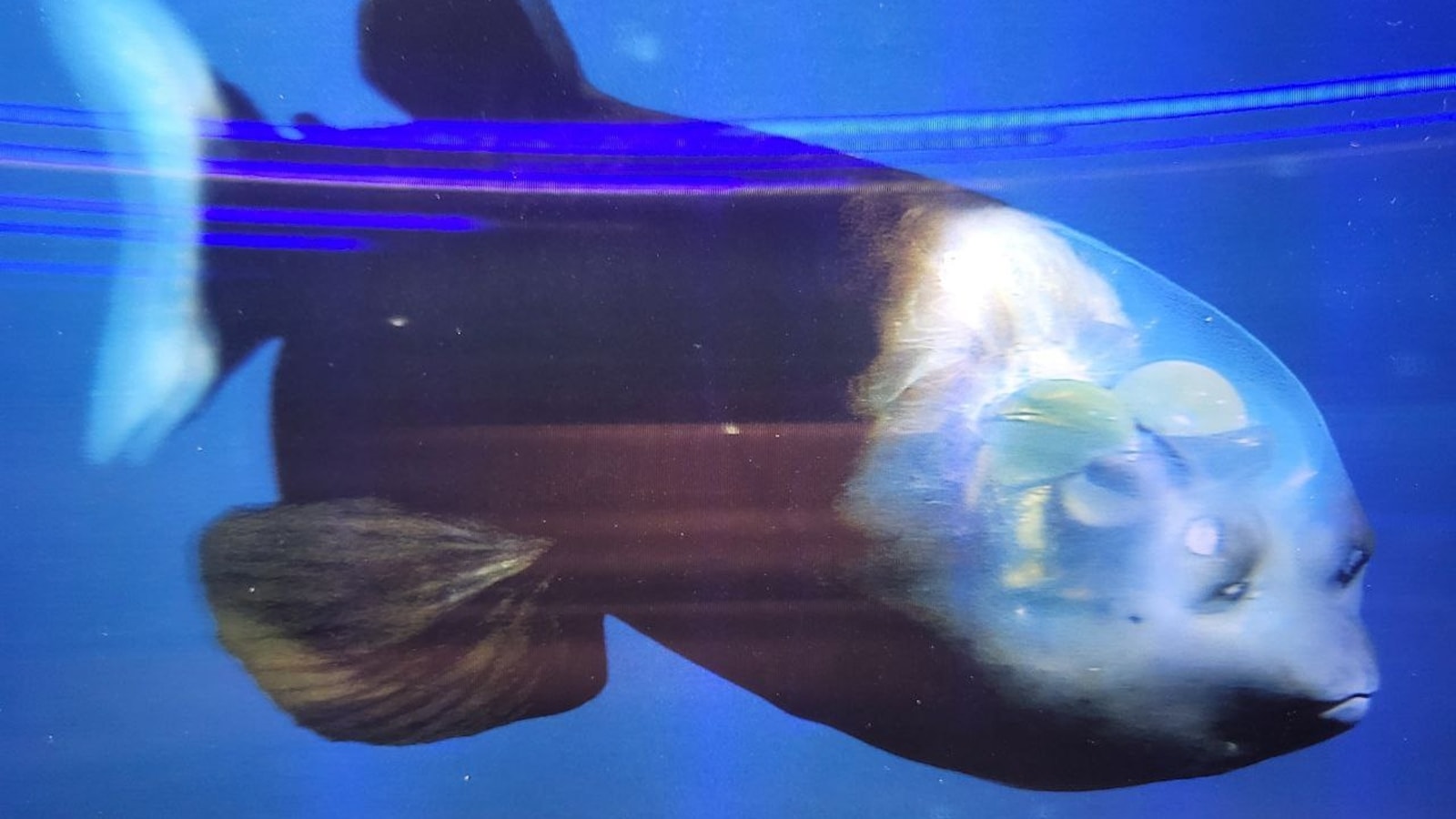📣 For more lifestyle news, click here to join our WhatsApp Channel and also follow us on Instagram
This deep-sea creature has a see-through head
The most striking feature of the Pacific Barreleye is, without doubt, its transparent, fluid-filled head. Through this clear shield, you can actually see its bright green, tubular eyes pointing upward
 Discover the Pacific Barreleye, the deep-sea fish with a transparent head and tubular eyes, and learn how it survives in the dark ocean depths. (Source: Wikimedia Commons)
Discover the Pacific Barreleye, the deep-sea fish with a transparent head and tubular eyes, and learn how it survives in the dark ocean depths. (Source: Wikimedia Commons)There’s a fish so bizarre that its head looks like a transparent dome, as if it’s wearing a built-in glass helmet. Meet the Pacific Barreleye (Macropinna microstoma), a deep-sea creature that’s baffled scientists and fascinated marine enthusiasts alike.
Discovered in the 1930s, this mysterious fish remained a scientific enigma for decades. It wasn’t until 2004, when researchers from the Monterey Bay Aquarium Research Institute (MBARI) captured footage of it in its natural habitat, that we finally understood its incredible features.
What makes the Pacific Barreleye so unique?
The most striking feature of the Pacific Barreleye is, without doubt, its transparent, fluid-filled head. Through this clear shield, you can actually see its bright green, tubular eyes pointing upward, designed to detect faint silhouettes of prey drifting above in the deep, dark ocean.
For years, scientists thought its eyes were fixed forward. But MBARI’s 2009 research showed that these eyes can actually rotate inside the head, letting the fish look both upwards and forwards while hunting. It’s like having periscopic vision inside your own head!
 Discovered in the 1930s, this mysterious fish remained a scientific enigma for decades. (Source: Wikimedia Commons)
Discovered in the 1930s, this mysterious fish remained a scientific enigma for decades. (Source: Wikimedia Commons)
Life in the deep sea
Found at depths of 600 to 800 meters (2,000 to 2,600 feet), mostly in the North Pacific Ocean, the Pacific Barreleye lives in near-total darkness. Down there, its transparent head acts as a clever adaptation. It helps protect the eyes from the stings of siphonophores, which are gelatinous, jellyfish-like creatures whose tentacles dangle like fishing lines in the deep sea.
The barreleye likely snatches small, drifting prey such as zooplankton, jellyfish, or siphonophore tentacles, making it a skilled predator in an area where food is scarce.
While it might look like a sci-fi creation, the Pacific Barreleye is a brilliant example of how life adapts in extreme environments. Its transparent dome works like a natural shield, and its specialised eyes offer a survival edge in the pitch-black world of the deep sea.
Scientists believe it uses its unique vision to spot faint glimmers of bioluminescence or the shadow of passing prey. It’s a master of patience, hanging motionless in the water with minimal movement, conserving energy while scanning for a meal.
Unless you’re a deep-sea explorer, your chances of spotting a Pacific Barreleye are pretty much zero. They’re incredibly fragile and usually don’t survive the journey to the surface. That’s why our knowledge about them mostly comes from remote-operated vehicles (ROVs) like those used by MBARI.
But even from afar, the Pacific Barreleye serves as a reminder of how weird, and wonderful, nature can be.
📣 For more lifestyle news, click here to join our WhatsApp Channel and also follow us on Instagram
- 01
- 02
- 03
- 04
- 05



























